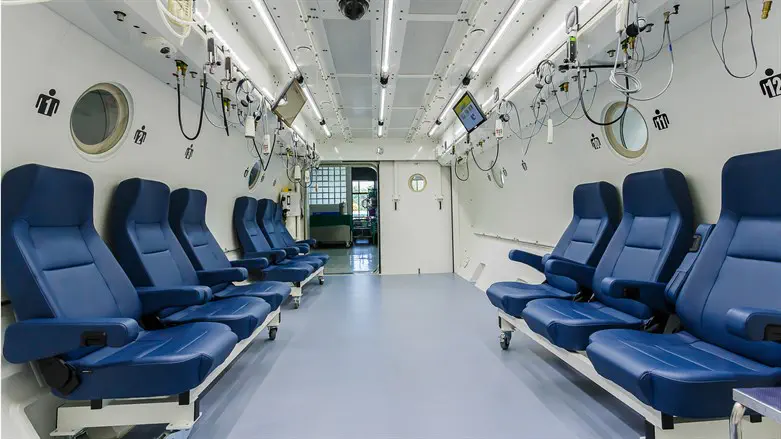
For the first time in the world: Researchers from Tel Aviv University and the Shamir Medical Center relieved the PTSD symptoms of IDF veterans using new protocols of hyperbaric oxygen therapy (HBOT).
The veterans, who suffered from treatment-resistant PTSD, demonstrated significant improvement in all classes of symptoms following a controlled clinical trial. The breakthrough research was led by Prof. Shai Efrati, Dr. Keren Doenyas-Barak, Dr. Ilan Kutz, Dr. Merav Catalogna, Dr Efrat Sasson, Dr. Amir Hadanny, Gabriela Levi and Yarden Shechter from the Sagol School of Neuroscience and the Faculties of Medicine and Life Sciences at Tel Aviv University and the Shamir Medical Center.
The peer-reviewed study was published Wednesday in the prestigious scientific journal PlosOne.
"The study included 35 combat veterans who suffered from PTSD that was resistant to both psychiatric medications and psychotherapy," says Dr. Keren Doenyas-Barak. "The veterans were divided into two groups: one group received HBOT while the other served as a control group. Following a protocol of 60 treatments, improvement was demonstrated in all PTSD symptoms, including hyper-arousal, avoidance, and depression."
"Moreover, both functional and structural improvement was observed in the non-healing brain wounds that characterize PTSD. We believe that in most patients, improvements will be preserved for years after the completion of the treatment. This study gives real hope to PTSD sufferers. For the first time in years the study's participants, most of whom had suffered from severe PTSD, were able to leave the horrors behind and look forward to a better future."
Hyperbaric medicine involves treatments in a pressurized chamber where atmospheric pressure is higher than sea-level pressure and the air is rich with oxygen. Considered a safe form of treatment, HBOT is already used for a range of medical conditions. Evidence gathered in recent years indicates that special hyperbaric protocols can improve the supply of oxygen to the brain, thereby enhancing the generation of new blood vessels and neurons. It must be noted that HBOT treatments require the evaluation and supervision of qualified physicians. Moreover, for medical indications it should be given using a certified chamber with appropriate quality assurance using the exact studied treatment protocols.
"Today we understand that treatment-resistant PTSD is caused by a biological wound in brain tissues, which obstructs attempts at psychological and psychiatric treatments," explains Prof. Shai Efrati. "With the new HBOT protocols, we can activate mechanisms that repair the wounded brain tissue. The treatment induces reactivation and proliferation of stem cells, as well as generation of new blood vessels and increased brain activity, ultimately restoring the functionality of the wounded tissues. Our study paves the way to a better understanding of the connection between mind and body."
According to the World Health Organization (WHO), almost 4% of the global population, and 30% of all combat soldiers, develop PTSD.
"Our results indicate that exposure to severe emotional trauma can cause organic damage to the brain," says Prof. Efrati. "We also demonstrate for the first time that direct biological treatment of brain tissues can serve as a tool for helping PTSD patients."
"Moreover, our findings may be most significant for diagnosis. To date, no effective diagnostic method has been developed and diagnosis of PTSD is still based on personal reports which are necessarily subjective – leading to many clashes between the suffering veterans and the authorities responsible for treating them. Think of a person who comes to the emergency room with chest pains. The pain might be caused by either a panic attack or a heart attack, and without objective EKG and blood tests, the doctors might miss a heart attack.
"At present we are conducting continuing research in order to identify the biological fingerprint of PTSD, which can ultimately enable the development of innovative objective diagnostic tools."

